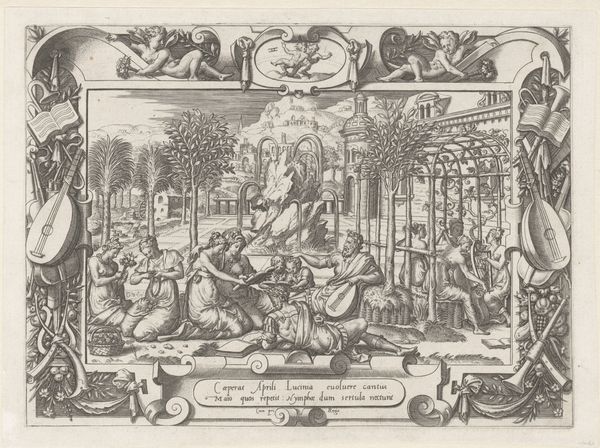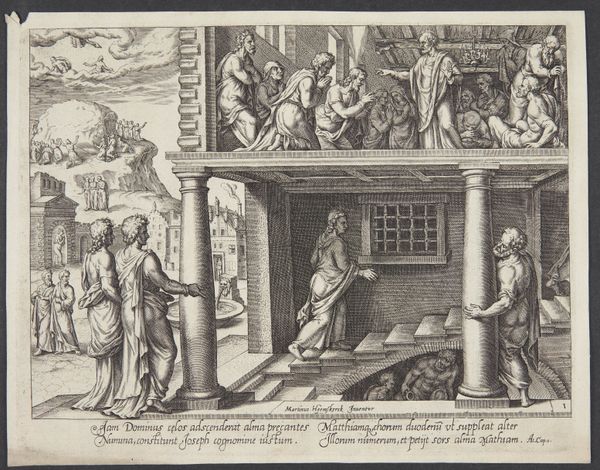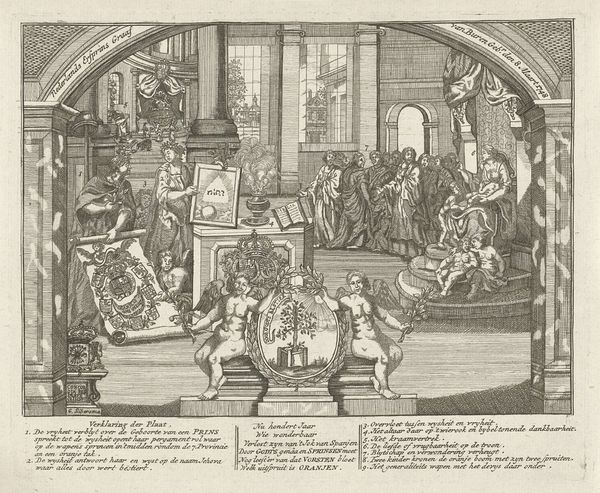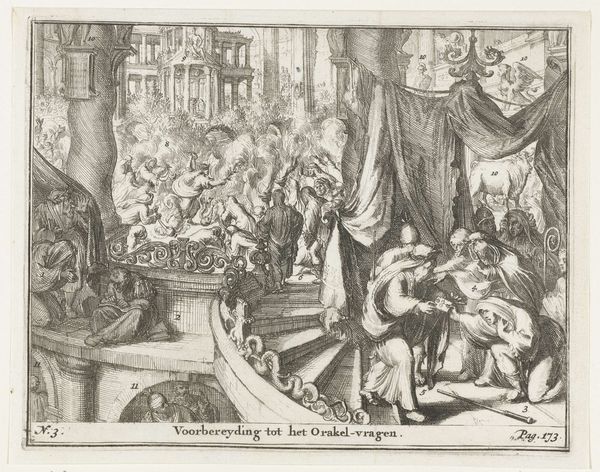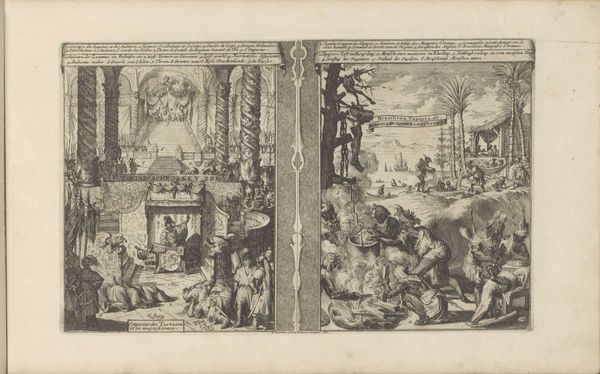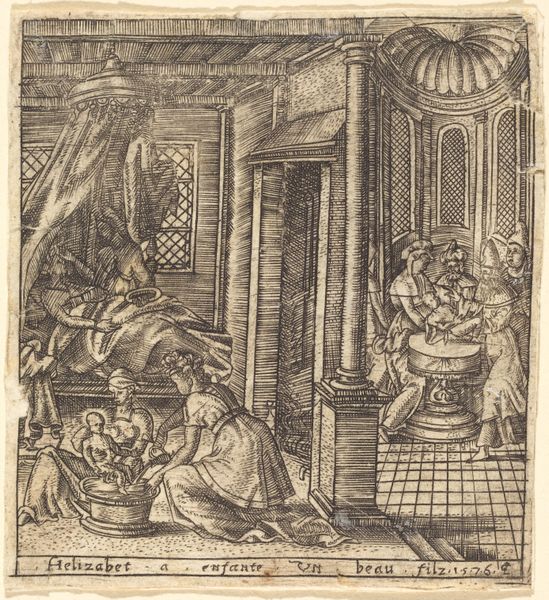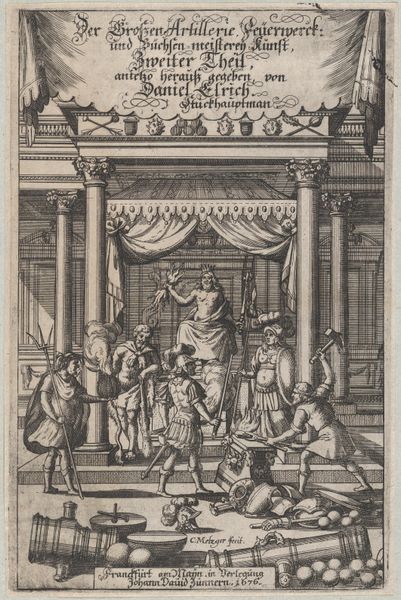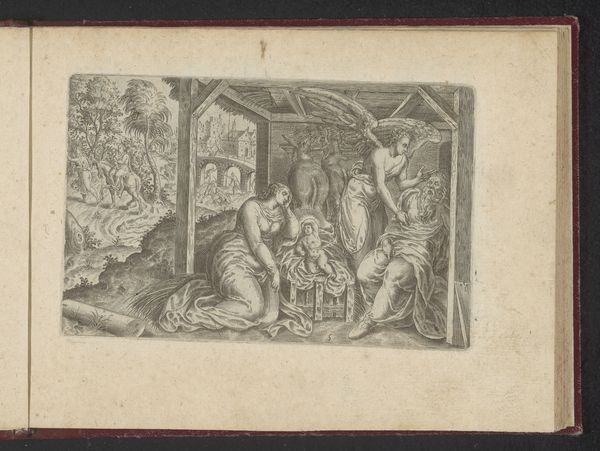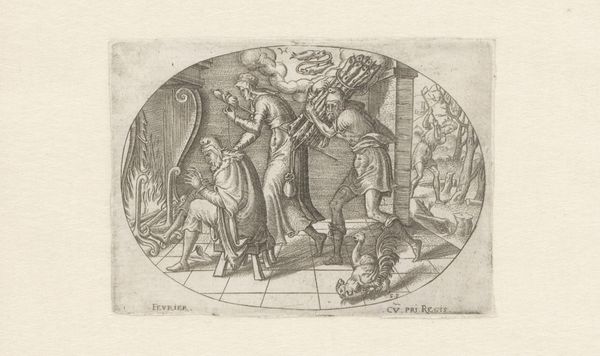
print, engraving
#
allegory
#
baroque
#
pen drawing
#
dutch-golden-age
#
mechanical pen drawing
# print
#
pen illustration
#
pen sketch
#
figuration
#
pen-ink sketch
#
line
#
pen work
#
genre-painting
#
history-painting
#
engraving
Dimensions: height 144 mm, width 200 mm
Copyright: Rijks Museum: Open Domain
Editor: So, here we have "Allegorie op de geboorte van de prins van Oranje, 1748" by Gerrit Sibersma. It's an engraving, and it feels incredibly detailed and complex. What immediately strikes me is the almost overwhelming amount of symbolism crammed into the composition. How do you even begin to interpret something like this? Curator: A good starting point is considering the context of printmaking in 1748. Engravings were essentially a form of mass media. This wasn't just about art; it was about communicating power and solidifying political narratives. Consider the labor involved: the meticulous cutting into the metal plate, the many identical prints, the intended wide distribution. Who was the target audience and what was their level of literacy, both visual and textual? Editor: That's a good point. So, rather than focusing solely on the artistry, you're emphasizing the social role and production aspects of the print itself. Looking at the details, the symbols all seem related to Dutch royalty and the House of Orange. How do you read the connection between the materiality and that propaganda element? Curator: Precisely. The *act* of creating and distributing multiples is part of the message. Think of the labor needed to reproduce those coats of arms, angelic figures, and architectural motifs—each mark is a statement of dynastic strength and divine favor. This material representation of power, replicated and spread throughout society, aims to normalize and reinforce the social order. This connects it directly with larger systems of control. How might the cost of the materials play into who saw this work and their impression of it? Editor: That makes a lot of sense. I hadn't considered the sheer labor investment as a means of amplifying the message of power. Curator: Right, seeing it not just as a picture, but as a produced object changes the whole perspective. Editor: Definitely. I'll never look at historical prints the same way again! Thank you.
Comments
No comments
Be the first to comment and join the conversation on the ultimate creative platform.
